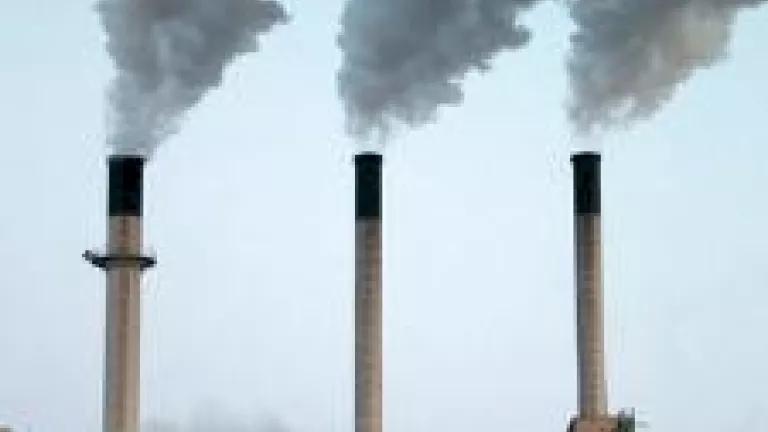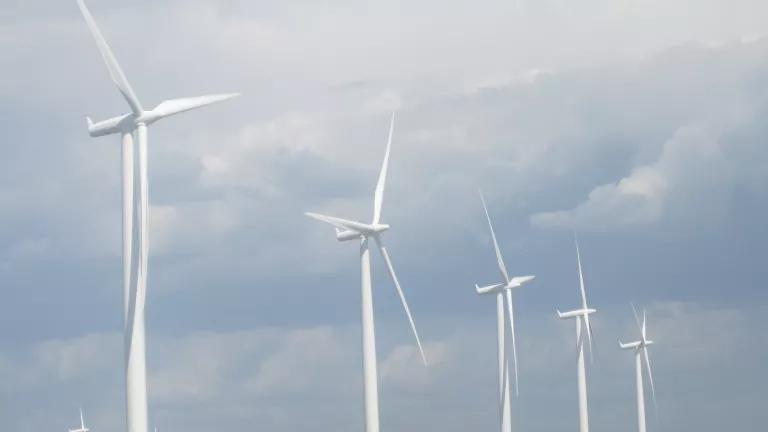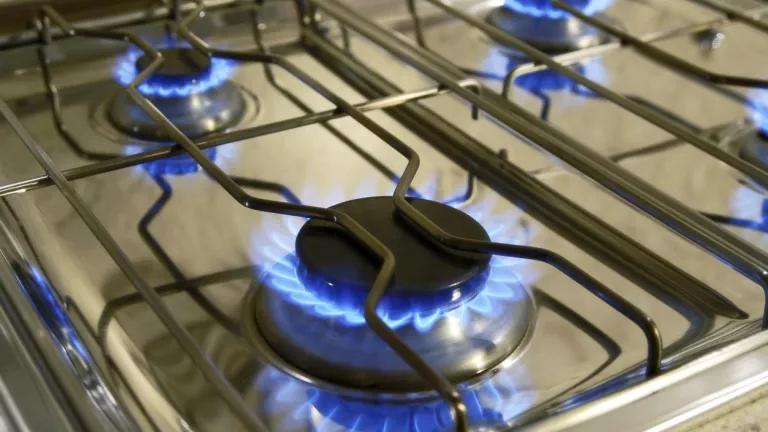Trump’s Dirty Power Plan: Another Repeal and Replace Scam

Speaking on FOX News from Hazard, Kentucky, as the season’s fourth hurricane still pummels the southeast, EPA chief Scott Pruitt said that tomorrow he will propose to repeal the Clean Power Plan, the landmark Obama-era regulation to cut the power plant pollution that’s driving dangerous climate change and threatening the lives and health of millions of Americans.
Leaked versions of Pruitt’s repeal proposal speak vaguely about asking for public input on a possible replacement plan, later, maybe. There’s every indication that his replacement would make only trivial cuts in power plant emissions, and may even drive them up, if it happens at all. Update 10/10: The repeal proposal Pruitt signed today appears substantially the same as the leaked draft.
In short, we had a Clean Power Plan. What we’re getting is a Dirty Power Plan.
We’ve seen this “repeal and replace” movie before. Echoing Trump’s failed healthcare legislation, Pruitt’s Dirty Power Plan would put tens of millions of Americans in greater danger from extreme weather and other climate impacts, cause thousands of early deaths each year, and sicken tens of thousands more.
And while it won’t bring back coal, it would sacrifice up to 560 thousand new clean energy jobs and $56 billion in additional economic growth that would come from cleaning up the electric sector under the Clean Power Plan.
Today’s proposed repeal of the Clean Power Plan just begins the battle. Pruitt’s EPA must hold hearings and take public comment, and issue a final repeal―with or without a possible replacement. He must respond to all legal, scientific, and economic objections raised, including the issues we lay out here.
Then we will take Pruitt and his Dirty Power Plan to court.
The courts are going to look very hard at this, and they will not let Trump’s deregulatory lieutenant ignore EPA’s legal obligations under the Clean Air Act. Nor will they let the Trump EPA cook the books on science and economics.
1. Pruitt Is Shirking EPA’s Legal Obligation to Act on Climate
Whether it’s straight repeal or repeal-plus-do-nothing-replacement, the Trump/Pruitt Dirty Power Plan will not meet EPA’s obligations under the law.
That’s because the Clean Air Act―the nation’s landmark air pollution law―requires EPA to effectively curb power plants’ climate-changing carbon pollution.
The Supreme Court has already decided three times that it’s EPA’s duty to curb carbon dioxide and other heat-trapping air pollutants (Massachusetts v. EPA in 2007, American Electric Power v. Connecticut in 2011, and UARG v. EPA in 2014).
The high court even specifically ruled that EPA can curb power plants’ enormous CO2 emissions using the very part of the Clean Air Act employed in the Clean Power Plan.
The courts have also upheld EPA’s science-based determination that climate-changing pollutants endanger public health and welfare, now and even more so in the future (Coalition for Responsible Regulation v. EPA, in 2012). This endangerment finding makes it a legal requirement to act.
Although Pruitt is flirting with launching a “red-team/blue-team” sham review of climate science, even he seems to get it that trying to reverse the endangerment finding would be a fool’s errand.
So in today’s Clean Power Plan repeal proposal, Pruitt recycles other arguments that he made as Oklahoma’s polluter-friendly attorney general and sets about trying to reinterpret the key term “best system of emission reduction” in Section 111 of the Clean Air Act.
He must repeal the Clean Power Plan, Pruitt claims, because after his reinterpretation, EPA lacks the right statutory “tools” to support the Plan.
Power plant standards, he says, can be based only on “physical or operational changes to the source itself.” The Clean Power Plan overreached because EPA supposedly cannot look “beyond the fenceline.” He must look at individual plants in isolation, he asserts, and cannot set an emission standard that reflects the interconnected way the electric power industry works.
Put simply, he’s wrong about the Clean Air Act.
The law requires EPA’s standards to be effective―a standard doesn’t represent the “best system of emission reduction” if it does not achieve as much carbon pollution reduction as can be accomplished at an acceptable cost. The Supreme Court has emphasized EPA’s authority to solve complex air pollution problems as they arise, and has upheld standards that reflect how the power industry actually functions. That authority includes setting standards that include emission credit “systems” that enable significant cuts in power sector pollution at reasonable cost. (EPA v. E.M.E. Homer City Generation, in 2014.)
All these factors undercut Pruitt’s do-nothing interpretation of the Clean Air Act’s “tools.”
Pruitt wants to ignore the real-world characteristics of the power system. Unlike many other industries, power plants don’t operate on their own, in isolation. They are all interconnected, and they are operated as a system over vast regions.
Power companies shift generation between plants―hour-by-hour, day-by-day, and year-by-year―depending what is the cheapest way to meet demand. And when fuel prices change, or new pollution rules kick in, power companies shift which plants they use. Every day. Every year. The Clean Power Plan reflects the way the industry works.
Pruitt is pretending the power industry still looks like it did in the early days of Thomas Edison, when isolated plants operated independently and served only the immediate area around them. That’s more than a century out of date.
Pruitt’s out-of-date view of how the power industry works is fundamental to his proposed repeal of the Clean Power Plan, and to the replacement Dirty Power Plan he seems to be contemplating.
The courts are not going to buy Pruitt’s constricted view of the Clean Air Act or his fictional view of the power industry.
2. Pruitt Is Cooking the Books on Science and Economics
Nor are the courts going to let Pruitt cook the books on science and economics.
Pruitt has a problem. The Clean Power Plan will produce tremendous climate and public health benefits that far outweigh its costs. The analysis supporting the Clean Power Plan in 2015 showed that it will produce climate protection and health benefits ranging from $34 to 54 billion in 2030. Subtracting $8-10 billion in costs, the net benefits in 2030 range from $26 to $45 billion. Though the numbers differ year by year, the Clean Power Plan produces more benefits than costs in every year over the next two decades.
Slipped into the back pages of the leaked draft of Pruitt’s repeal proposal are three separate gambits to turn that cost-benefit analysis around. Each is a radical departure from established science and economics. None has been reviewed by independent scientists or economists, and they will not pass inspection now that they are out in public view.
My colleagues Kevin Steinberger, Starla Yeh, and John Walke blow the whistle on these gambits in these detailed posts on the proposal and the Regulatory Impact Analysis. (See here, here, and here.) To summarize:
Tricks on carbon: The Clean Power Plan estimated that reducing each ton of carbon dioxide emissions produces around $48 in quantifiable benefits in 2030 (the per-ton value increases each year). Multiplied by hundreds of millions of tons of carbon dioxide reductions, that translated into $20 billion in carbon pollution reduction benefits from the Clean Power Plan in 2030.
Based on the leaked draft, Pruitt is using two tricks to cut that number down. First, he counts only the “domestic” benefits of curbing carbon pollution, willfully ignoring the damages that our power plants’ CO2 emissions cause beyond our borders.
Pruitt’s second trick is to use a high “discount rate” to virtually ignore the effects that carbon pollution will have on our kids, our grandkids, and future generations.
Together, these two tricks cut value of cutting CO2 down to as little as $1 per ton.
Power plant carbon pollution doesn’t stop at our borders or in our lifetimes. It adds to climate impacts world-wide and piles climate burdens on our descendants.
It’s not conservative for neighbors to throw their garbage into each other’s gardens, or to leave their garbage for their descendants. Yet that, in a nutshell, is Pruitt’s approach to climate change.
Tricks on soot and smog: The Clean Power Plan reduces other pollutants, such as fine particles (soot) and ozone (smog), as a result of the shift from coal-fired electricity to cleaner generation. Health effects experts have long known that these are “non-threshold” pollutants―they cause death and illness even at low concentrations.
As a result, the Clean Power Plan will prevent up to 3,600 premature deaths and 90,000 childhood asthma attacks every year across the United States once fully implemented. The dollar value of these lives saved and health improvements totals up to $34 billion in 2030.
Pruitt’s leaked proposal dramatically reduces these benefits of avoided death and illness through the trick of assuming that soot and smog are “threshold” pollutants that are completely harmless at low levels. This radical shift is not supported by medical studies, EPA’s independent scientific advisors, or expert organizations like the World Health Organization and National Academy of Sciences.
But “threshold” assumption does what Pruitt wants―his revised cost-benefit analysis drastically reduces the soot and smog health benefits of the Clean Power Plan by more than 80 percent, to as little as $1-5 billion per year.
Again, it’s not conservative to leave thousands of seniors, children, and other Americans unprotected. It’s just a huge boon to polluters.
Tricks on energy efficiency: The Clean Power Plan would incentivize major investments in making our homes, commercial buildings, and industries more energy efficient, cutting overall power demand and reducing how much power needs to be generated.
Achieving energy efficiency requires significant investment, but is cheaper than building and operating additional generation. EPA accounted for both the investments and savings from energy efficiency as a net cost reduction, on the cost side of the cost-benefit equation.
Pruitt’s proposal splits things up, counting energy efficiency investments as costs, and energy efficiency savings as benefits. This makes no net difference. But it gives Pruitt a deceptive talking point adding billions of dollars to the cost side of the ledger.
The net effect of cooking the books in these three ways is to dramatically reduce the apparent benefits of the Clean Power Plan and to inflate its costs.
Pruitt is counting on the courts to defer to his new estimates. But when his accounting tricks are exposed, his new numbers won’t withstand inspection.
* * *
Pruitt claimed again in Hazard this morning that he wants to give industry “regulatory certainty.” In fact, he’s only magnifying industry’s uncertainty. Whether they liked the Clean Power Plan or not, it charted a course that could guide power companies in their planning and investment decisions.
Now they have years of conflict and litigation to look forward to. And since both climate change and the Clean Air Act will be here long after Trump and Pruitt are gone, power companies face greater uncertainty predicting their future regulatory responsibilities.
In February, Administrator Pruitt told the Wall Street Journal:
“The citizens just don’t trust that EPA is honest with these numbers. Let’s get real, objective data, not just do modeling. Let’s vigorously publish and peer-review science. Let’s do honest cost-benefit work. We need to restore the trust.”
These words will come back to haunt him now.
Neither climate change nor the Clean Air Act are going away. They will outlast Scott Pruitt. And NRDC will not give up fighting for climate action and clean air.




